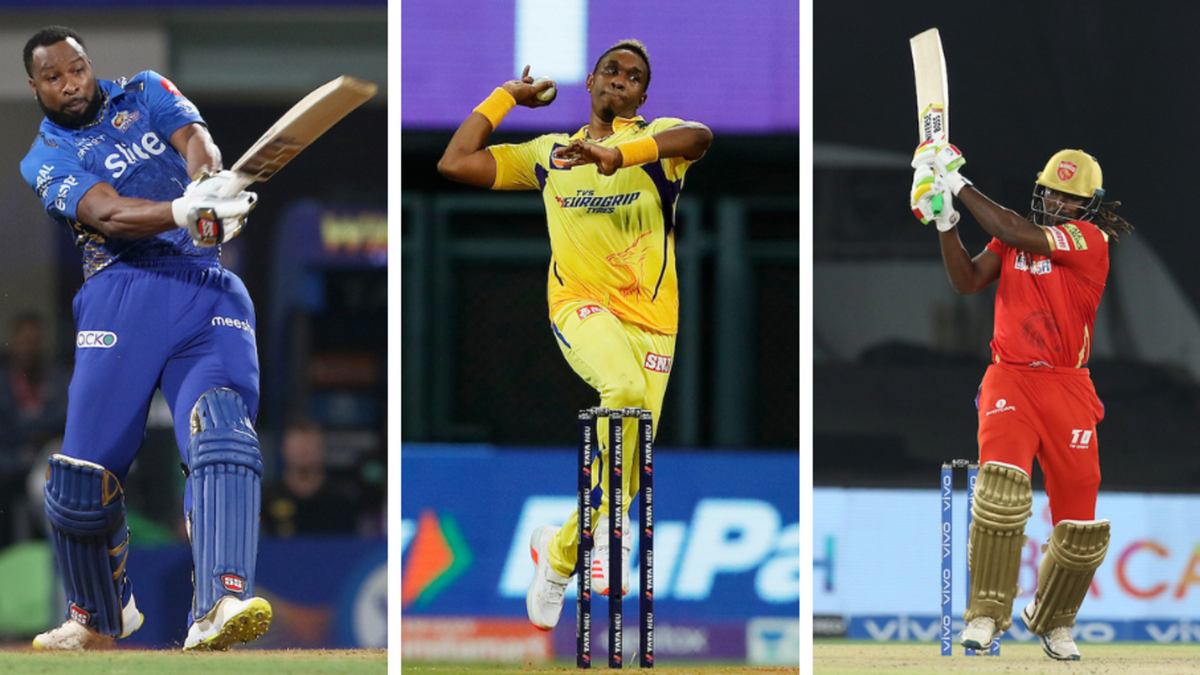
Ten West Indies players were released by the IPL teams, while only seven were retained ahead of the 2023 IPL auction. Sarah Waris wonders whether the T20 dominance of the players from the islands is over.
The ‘club vs country’ debate first emerged when players from the Caribbean started shedding their loyalty to the national team in favour of the high-paying T20 leagues around the world. Their natural physical strength and big-hitting skills increased their stocks, and with the financial struggles of the West Indies board, flocking to the cash-rich domestic tournaments was an easy answer.
The golden generation of West Indies legends, including but not limited to Chris Gayle, Dwayne Bravo, Kieron Pollard, Sunil Narine and Andre Russell, was an embodiment of the talent that players from the islands possessed, proving to be indispensable to their franchises as they gradually moved away from playing for the West Indies.
While the T20 teams gained with their presence, the Windies struggled. Bereft of experienced campaigners who would ensure a smooth transition for the youngsters, the team faced a slump after their 2016 T20 World Cup triumph. Having won 64 percent of their matches in the span of two years until their second world title, the West Indies have only managed to win 33 of their 99 games since, and failed to reach the Super 12 in this year’s T20 World Cup. The absence of seniors played its part, but the domestic structure, along with the overall attitude towards representing the nation was a contributing factor as well.
The Caribbean Premier League does not have a ‘feeder league’ beneath it, leaving the West Indies selectors to pick their T20I squad based on the showings in the event. This is in contrast to most other countries, including India, where youngsters are recognised and scouted for the IPL based on their performances in the Syed Mushtaq Ali Trophy.
The CPL currently has six teams, with four overseas players allowed per XI. This allows less than fifty local cricketers an opportunity to show their skills every year. The quality of cricket in the CPL has been constantly debated (often due to inconsistency of pitches), which ensures that even standout performers have their flaws.
Consider Evin Lewis, who was recently released by the Lucknow Super Giants. His irregular international appearances have led to him having little match practice at the highest level, which has made IPL teams apprehensive about picking him. Lewis struck at 156 from 18 T20Is in 2021, which had helped him bag an IPL deal at the start of the year. Though he was in decent touch in CPL 2022, only three T20I appearances in 2022 could have played a part in his release ahead of the auction. Fabian Allen and Sherfane Rutherford, two other irregular members of the national side, also among the ten releases.
Nicholas Pooran has played for the national team frequently, but West Indies’ recent poor form and his personal slump in international cricket have led to Sunrisers Hyderabad, who had bought him for INR 10.75 crore earlier this year, to release him. It reiterates how IPL teams are preferring performances to potential.
What about the retentions? Alzarri Joseph picked up 16 wickets in 10 T20Is at an average of 18.68 and an economy rate of 7.47, while Rovman Powell has struck at 149, scoring a hundred and two fifties in 21 innings. It is no coincidence that they are among the retained cricketers. Of course, Shimron Hetmyer was retained by Rajasthan Royals despite not playing in the 2022 T20 World Cup – but he had a fantastic IPL before that (314 runs at 154).
Despite their obvious talent, the new generation of West Indies players lacks the desired experience of the legends of the yesteryear. Sporadic international appearances, sometimes by choice, have restricted them to CPL and some T20 leagues that do not grab enough attention. As a result, they have had trouble stamping their mark in the league. Unless they play – and succeed – for the West Indies more often, that is unlikely to change.








